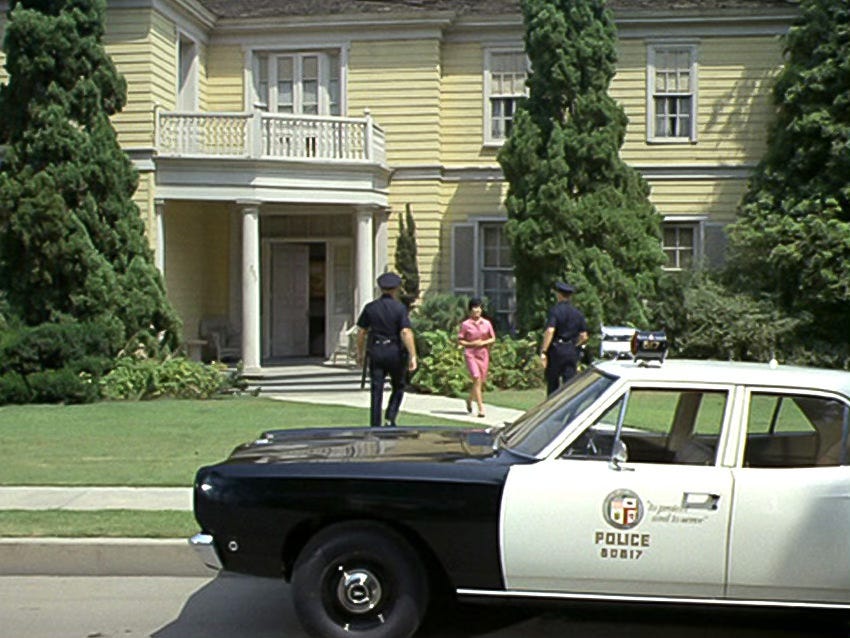Back to Basics: Law Enforcement Must Respond to Calls Again
Forget coffee with a cop, engage the public by investigating minor cases and solve crime
The negative trend has been going on for years. When I was assigned to the Criminal Investigations Division in 2001, we noted that San Diego was not responding to property crimes below a specific dollar value. One property commander, who was opposed to the idea, calculated that it cost the city less money to purchase a victim a new lawn mower than pursue a criminal investigation of the theft. In many cases we recovered property we knew was stolen, only to have no theft report or victim come forward to make the complaint.
I was fresh out of five years in patrol where we were instructing victims that it was their civic duty to never to fail in reporting crime. Now, we were discussing how to curb a patrol response by using a 911 dispatcher to triage calls on a decision tree script, so victims could call it in to our front desk.
We didn’t move forward in that direction at that time, but the financial reasoning was the compelling and the persistent argument. Many supervisors and managers in that process didn’t understand that besides statutes that determined degrees of crime based on property value, we didn’t exist in an economic model. In other words, policing and public safety was never about making financial sense. They couldn’t equate that there is no financial benefit to society from solving a murder, kidnapping, or disappearance although they understood the necessity of working those cases.
The economics of policing
Policing is rarely a profit center for a city or other government agency. Where it is, it is a problem. Around the country, municipalities have been revealed to collect traffic fines as a tourist tax. A smaller jurisdiction we would drive through to get to another part of our city had a reputation and we joked that we needed ‘fuzz buster’ radar detectors on the dashboards of our unmarked cars to avoid getting pulled over. An Ohio city was investigated for all the interstate traffic tickets written in the quarter mile that the roadway was in their jurisdiction. There was no entry or exit ramps to the highway in their city, yet they wrote hundreds of speeding tickets per month on that limited access freeway.
We are more than a decade into programs that enable citizens to file their own police reports online. In many places it was a soft roll out. “Would you like to wait several hours for an officer, or would you prefer to fill out your own report?” Did this stem from the thousands of traffic crash investigations where officers felt that this non-criminal largely administrative task was more a service to insurers than citizens? More likely, it was command staffers who became aware of such programs at conferences and from vendors. This was their answer to all the voices at the state, county and city always asking to tighten their belts.
Today, we have sophisticated and expensive systems that discourage citizens from engaging the police to do a report. Officers flagged down on the street today give crime victims a website or a phone number. Chiefs, sheriffs and other police administrators praise the sensibilities of such systems and explain that these programs help make up for budget shortfalls and staffing shortages. Everyone gets an award when a technological milestone is achieved.
If you hear “go away, your case is not important to us, and you should fill out an online report that will never get investigated and be filed in records forever” how often will you continue wasting your time filling out online reports for stolen Huffy bikes and Toro lawn mowers? Will you have confidence in your police department for the protection of yourself and your family?
The hypocrisy of community engagement
These are the same agency leaders that can’t stop talking about transparency, accountability, equity and community engagement. Making excuses, and using some artificial budgetary dilemmas, they have created an unnecessary division between the community and the police. Worse, they have every deputy, officer, patrol service aide, trooper, and community service officer in contact with the public parroting the same nonsense. Line officers don’t mind as it is less work for them. When I was in patrol, there were always officers who worked harder to not take a report than it would have required to just complete the report. The citizen would have been satisfied with their police officer and their hometown agency if they had just done their job.
Today, in some jurisdictions, the shoplifters are setting up card tables outside the stores they raided selling the merchandise they stole. Due to self-destructive policies and laws, such as Proposition 47 in California and no-cash-bail catch and release systems in New York and Illinois, many victims, including retail stores, don’t bother calling the police anymore.
In case you haven’t heard, the FBI rollout of National Incident Based Reporting System (NIBRS) replacing Uniform Crime Reporting (UCR) has been a statistical disaster. Too few agencies are voluntarily reporting and the data collected is completely worthless. Our nation’s largest cities have yet to report their numbers. We may not know the exact numbers, but we can reliably say that crime is not down.
Back to the basics
We need to get back to the basics of policing. Jack Webb did a remarkably accurate job in both Dragnet and Adam-12 demonstrating the value of basic police work. In the early 1990s, apart from power windows in the squad cars, the basic principles carried over from the late 60s and early 70s.
There will always be frequent flyers you may see more than once a shift, but the act of calling the police is a rare event for most citizens. The idea of a squad car in front of a house prompts questions and speculation from neighbors. A courteous uniformed patrol response demonstrates that their public servants are going to take their concern seriously. A latent print developed by officers at the scene may identify the criminal and provide crime analysts with patterns to interpret. When they do solve crime, they often solve far more than one crime. Today, we are willing to abandon all that evidence for the sake of fiscal prudency and budget concerns.
Encounters with crime victims, including receiving their sworn testimony, prompt other investigative opportunities. It’s hard to recall a single occasion where a resident was completing a statement or affidavit where they didn’t discuss other safety or crime concerns. On many occasions, other family members and neighbors want to share valuable street level intelligence.
Sometimes, they want to discuss how the police are failing and how they can be more effective. We need to listen to them before we argue.
Field interview cards attentively filled out also give analysts more data to process. An officer I worked with would arrest on every arrestable offense. “We can’t solve these cases unless we get their prints in the system,” and at that time hundreds of crimes by dozens of offenders were solved via that very method. Most importantly, very serious crimes, murders, attempted murders and rapes, were solved by gathering the data from other crimes and having the suspect identified. Can you imagine having latent prints from a murder and not getting a hit in AFIS until someone is arrested for being in the park too late? It used to happen every day but the more police scale back on engagement, the more these cases will remain unsolved. The City of St. Louis recently revealed that they have more than 1,000 unsolved murders from the last decade.
Prior to Automated License Plate Readers (ALPRs) and Real-Time Crime Centers (RTCCs), the popular philosophy was Intelligence Led Policing (ILP), a term that befuddled many administrators. While it had merits, it was based on two assumptions: an increase of data and information to analysts and an increase in analysts to process this information into actionable intelligence. This coincided with the data drought from scaling back on property calls and evidence collection. Political forces between 2009 and 2021 are also correlated with a steep decrease of field interview cards as there were fewer and fewer field contacts.

Responding to calls gives officers an opportunity to have a legitimate presence in the neighborhood and a reason to be on a first name basis with citizens. The value of that cannot be overstated. The irony is that instead of filling an already crowded coffee shop parking lot with police cars (because we all have to take our own cars – just in case) law enforcement officers could be ‘having those honest conversations’ in citizens own homes and addressing the most important issue to citizens: crime and the fear of crime.
Please keep all of our officers in your prayers, especially the law enforcement officers and their families in Lafayette, Louisiana.
Roland Clee served a major Florida police department as a Community Service Officer for more than 26 years. His career included uniformed patrol, training, media relations, intelligence, criminal investigations, and chief’s staff. He writes the American Peace Officer newsletter, speaks at public safety, recruiting and leadership conferences and helps local governments and public safety agencies through his business, CommandStaffConsulting.com. His work is frequently featured on LawOfficer.com, the only law enforcement owned major media presence in the public safety realm.
References:
https://www.governing.com/urban/why-its-confusing-to-know-whether-crimes-really-up-or-down
https://www.wdsu.com/article/lafayette-police-officer-killed-hostage-situation/61708405






Absolutely spot on! We just had a Commander tell us he was done with the coffee with a cop programs that were not helping people in communities anymore. I’m starting to see a subtle shift back to the basics! Thank you, brother, for continuing to espouse truth!
Whats this? Respond to calls for service? What? As a profession we have all but abandoned our oath and mission, to serve and protect. Can't do either if we don't interact. Engage the community by doing your job. Roland Clee does it again with a common sense approach taking what works and encouraging its implementation!